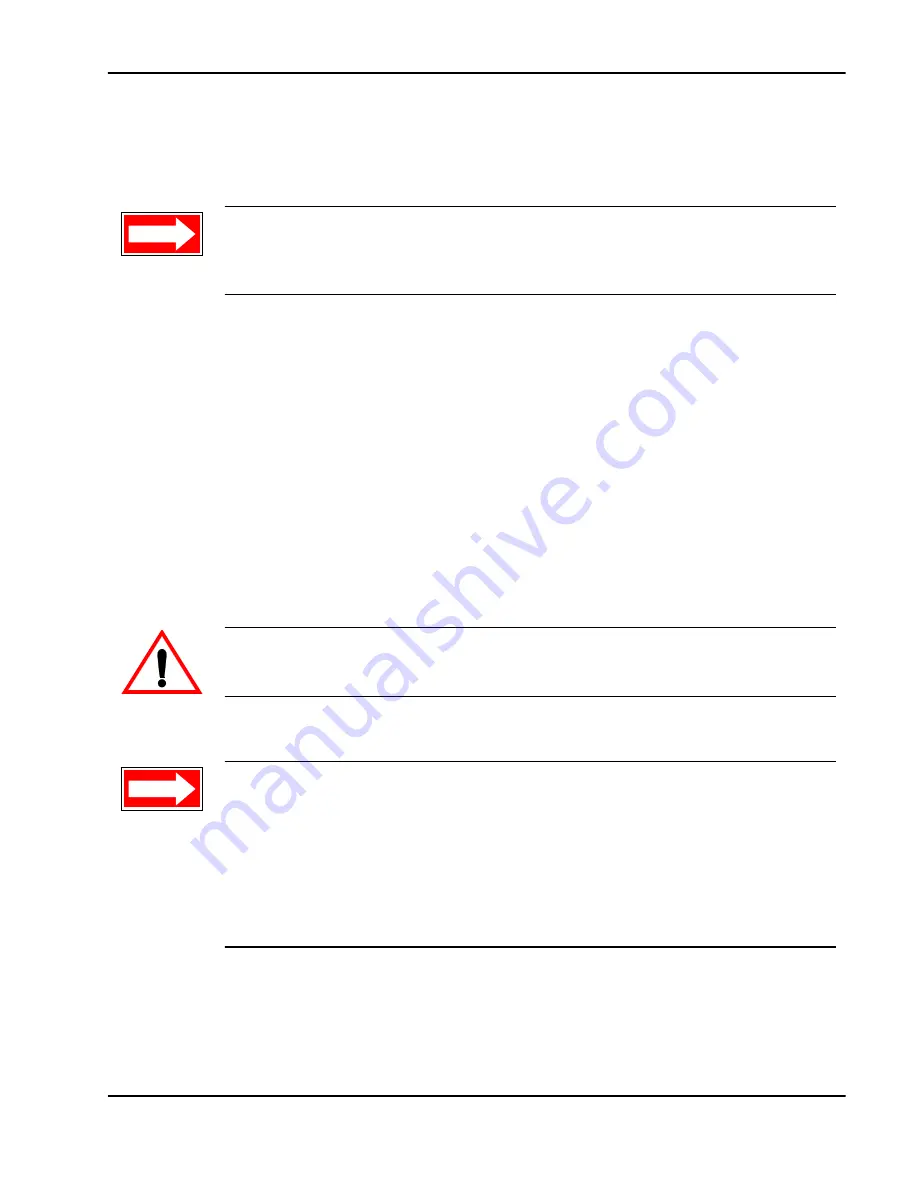
Slocum G2 Glider Operators Training Guide
TELEDYNE WEBB RESEARCH
5
Rev. 06/12
2.
Type
lab_mode on.
This puts the glider in lab mode and will prevent the
glider from trying to run its default mission.
3.
Type
ballast.
This deflates the air bladder, sets the pitch motor and
buoyancy pump to zeroed positions.
4.
Type
+ m_vacuum.
This displays the vacuum inside the glider
every time the sensor updates. If the vacuum is already at 6" Hg (7" Hg for
1000m), ±0.2” Hg, you are done. If not, you need to adjust the vacuum.
5.
Type
report clearall
.
This stops outputting the vacuum value.
6.
Put the aft cowling on the glider. If the glider is connected to an external power
supply, it will be necessary to power down by typing
exit
and disconnect the
power supply before installing the cowling.
7.
Repower, if necessary, and follow steps 1-3. You are now ready to put the glider
into the ballast tank.
8.
You will need to get CTD data from the glider so that you can calculate the
weight adjustment necessary to go from the ballast tank to target water
conditions. To do this, turn on all sensors in the science bay by typing
NOTE The 1000m pump can take several minutes to retract from fully
displaced to 0 cc displacement. If a user would like to monitor the retract
of the deep pump type
+ m_de_oil_vol
.
WARNING Do not place the glider in the ballast tank unless either a red
stop plug or a green go plug has been installed.
NOTE If any device is removed from service during the time the glider is
in the ballast tank the glider will move the buoyancy engine to full
displacement. This will result in incorrect ballasting. The most common
reason for this is the attitude sensor being taken out of service due to
local magnetic fields. A user should periodically check that all devices
are in service by typing
use
. f a device is out of service the user should
determine if it is critical for ballasting and type ballast again when
satisfied that the required devices are in service.
Summary of Contents for Slocum G2
Page 49: ......



































